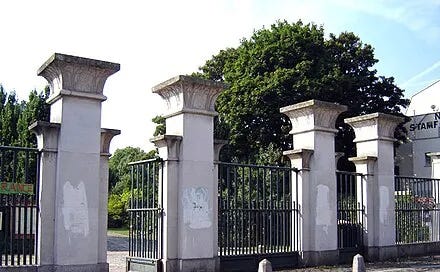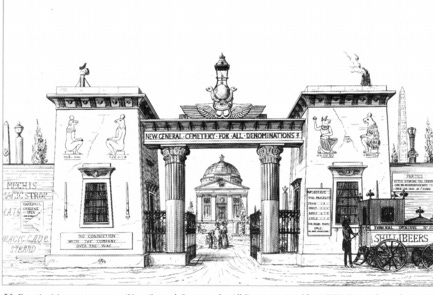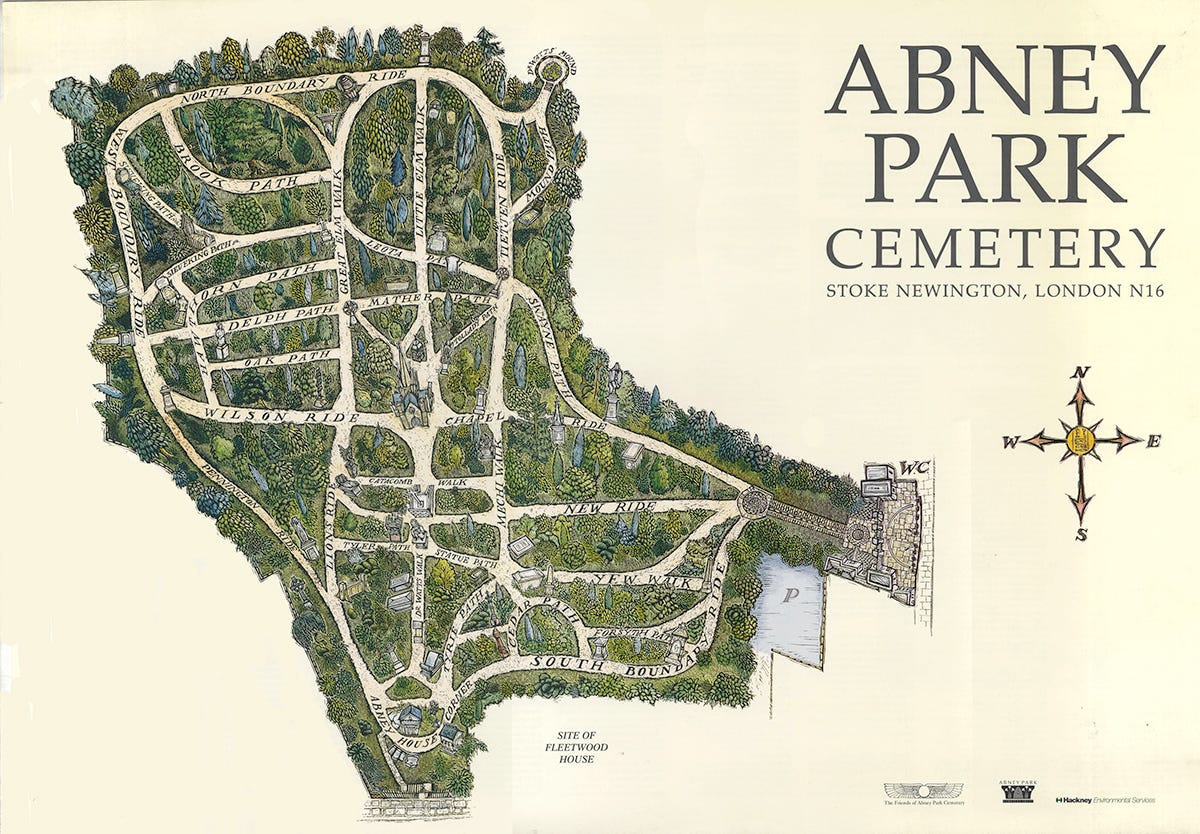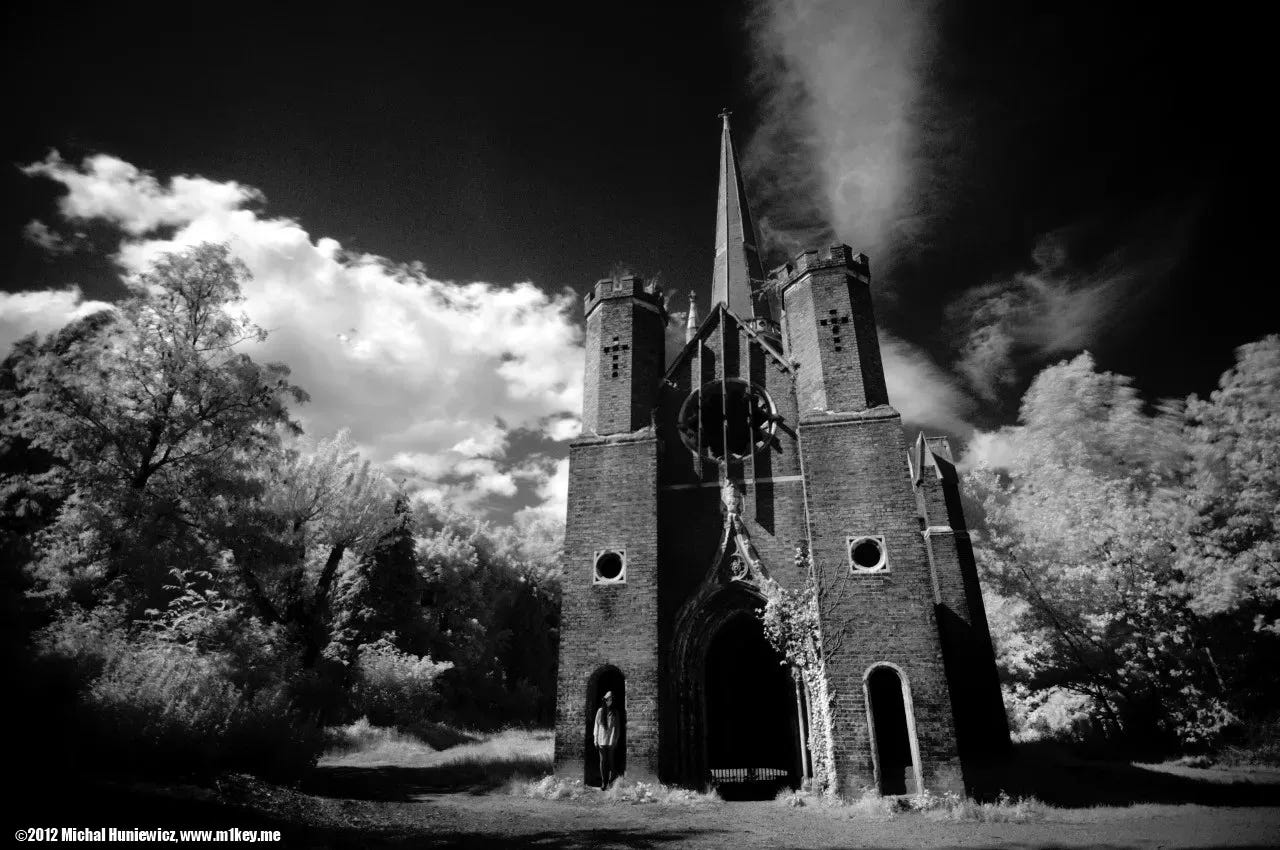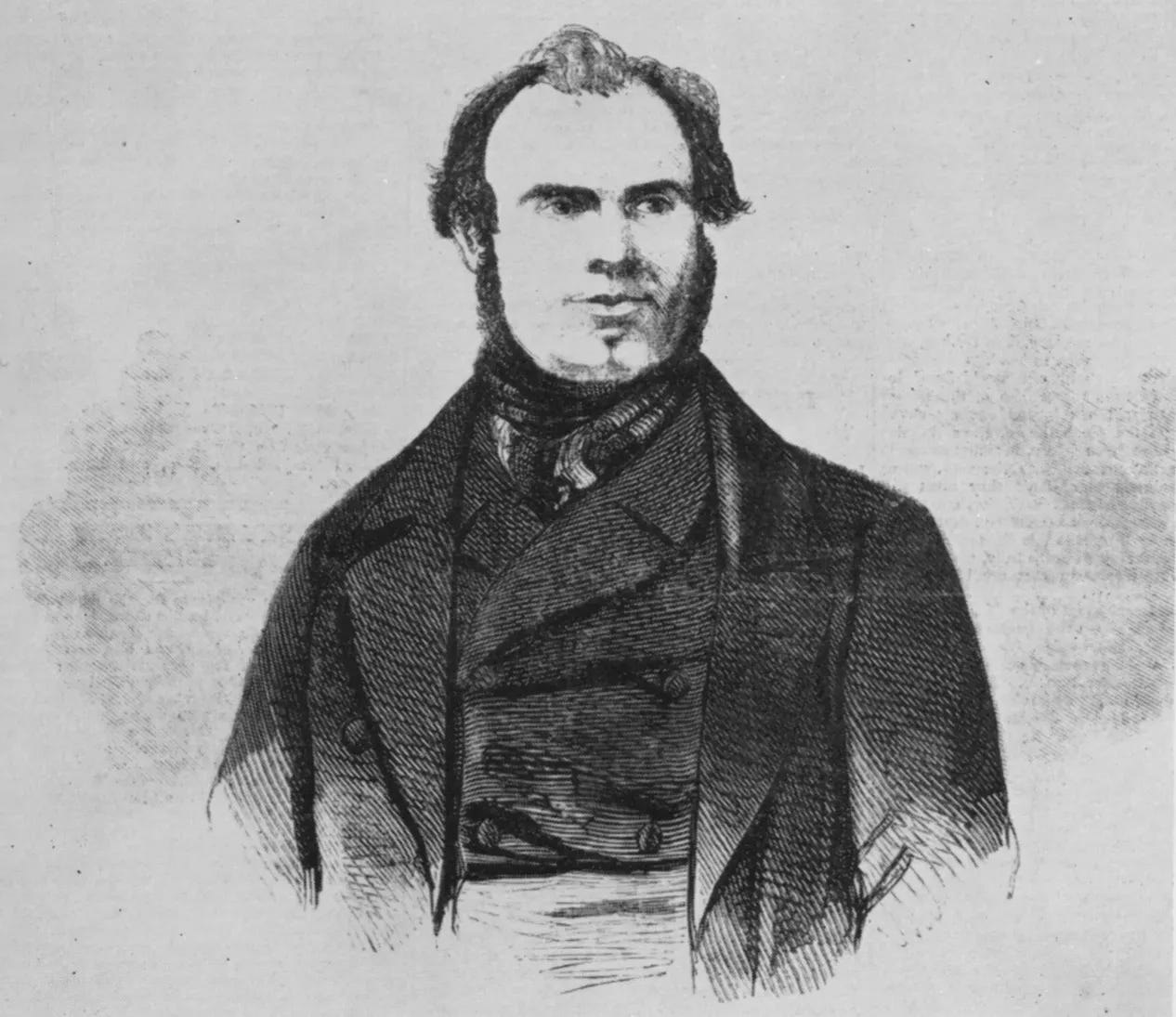The above caricature, entitled An Apology for the Revival of Christian Architecture, was a published in 1843 as an Anglican-inspired derision of the ‘Egyptianising’ entrance to a new garden cemetery at Abney Park, north east London. William Hosking, the architect for the 32-acre site, was an expert on the architecture of Ancient Egypt. Egyptologist, Joseph Bonomi, produced carvings and hieroglyphics for the gatehouse entrance.
Anglican Tories worried about paganism and neo-classicist conservatives protested against anything ‘African’ being introduced into ‘European’ architecture.
Abney Park was opened in 1840 as strictly non-denominational cemetary by non-conformist owners of the land. Over the next hundred years it was to take in all-sorts, including the Salvation Army (and founder, William Booth), and generations of religious and political dissenters, and just plain pagans.
At the centre of the 32-acre site is a chapel, built in neo-Gothic style, popularised by dissenters. The park was originally landscaped as an arboretum and botanical garden with 2,500 tree varieties. But after World War One, it fell into neglect and became dilapidated, overgrown and dangerous; with the chapel wrecked almost beyond repair by vandals. In the 1970s Hackney Council took over the site.
Happily, the fortunes of this leafy necropolis have turned. The Abney Park Trust, a small volunteer-run charity working in partnership with Hackney Council, has ‘the purpose of bringing Abney Park to life so together we can benefit and learn from the park’s unique wildlife, biodiversity and rich cultural heritage’.
Now, Abney Park has ‘completed its major National Lottery Heritage Fund-supported restoration project – and it has brought new community spaces, restored the chapel and improved access.’
‘In 2025, Abney Park Trust is celebrating radical writing with a year-long festival of book launches and author talks in the historic Abney Park Chapel and the brand-new Harriet Delph room. Laid to rest in Abney Park are prominent Abolitionists and trailblazing feminists as well as political campaigners and agitators, performers who pushed creative bounds, pioneering educationalists and many more. It’s in honour of their legacies that this festival takes place. We’ll be joined by scribes from across an array of genres, disciplines and backgrounds. And we’ll be thinking about radicalism in many senses – old, new, cultural, political, social and beyond.’
https://abneypark.org/radicalwriters/#calendar
Of all the political campaigners and agitators buried in Abney Park, the most consistently commemorated – especially by Irish radicals in London – is Bronterre James O’Brien (1804-64).
Local Member of Parliament Diane Abbott, said at a commemoration event in 2023:
‘Bronterre O'Brien was a key part of the revolutionary Chartist movement. This was part of the international revolutionary of the mid-18th century, which extended throughout Europe and beyond. But like so many other leading Chartists, Bronterre O'Brien was Irish. He was a child of Irish rebellion. This gave him some mettle and some insights into the battles to come and the ruthlessness of his enemies. But the Irish rebels of 1798 were themselves inspired by the French Revolution. So, we can say that there is always an international bond of rebellion and revolt…
Of course, in the end it was not suppression that killed off Chartism, although state brutality played its part. But in effect discontent was bought off with modest reforms and economic crumbs from the table. Neither of these are going to be on offer in the foreseeable future. So, we need to learn from leaders like Bronterre O'Brien, adapt their achievements and emulate their strength.’
This year (2025) the Bronterre O’Brien Memorial Commemoration will be delivered by Professor Bruno Leipold, Fellow in Political Theory at the London School of Economics, and author of Citizen Marx: Republicanism and the Formation of Karl Marx's Social and Political Thought (Princeton University Press, 2024). This will be on Sunday 18th May 2025 - meet at 2.30pm for 3pm graveside talk at the Harriet Delph room in Abney Park Chapel for 3pm talk at Bronterre’s gravestone.
My next post will be an article on Bronterre O’Brien and the Chartist Insurrection of 1839, published in the Ethical Record.

